Trending
Opinion: How will Project 2025 impact game developers?
The Heritage Foundation's manifesto for the possible next administration could do great harm to many, including large portions of the game development community.
A continuation of the article series based on Winifred Phillips’ top-rated GDC 2023 lecture discussing her award-winning Jurassic World Primal Ops musical score. Included: how to incorporate thematic material into a chaotic musical score.

By Winifred Phillips | Contact | Follow
Hello there! I’m video game composer Winifred Phillips. In March of 2023, I gave a lecture entitled “Chaos Theory: The Music of Jurassic World Primal Ops” during the Game Developers Conference 2023. This lecture was named one of the most popular presentations at GDC 2023, and is currently nominated for a Game Audio Network Guild Award for Best Game Audio Presentation. Every year, after I present at this popular yearly conference, I release the complete content of my lecture in a series of free articles. This is the sixth and final article in the series based on my GDC 2023 presentation. As before, I’m including all the substance from my GDC presentation in this article series, along with all of the videos and sound files, and many of the illustrations that I used during my GDC talk.
During these articles I’ve been sharing my process composing the musical score for Jurassic World Primal Ops – it’s the video game from Universal Games and Behaviour Interactive. Jurassic World Primal Ops came out in the summer of 2022, right alongside the theatrical run of the latest film in this famous franchise: Jurassic World Dominion.
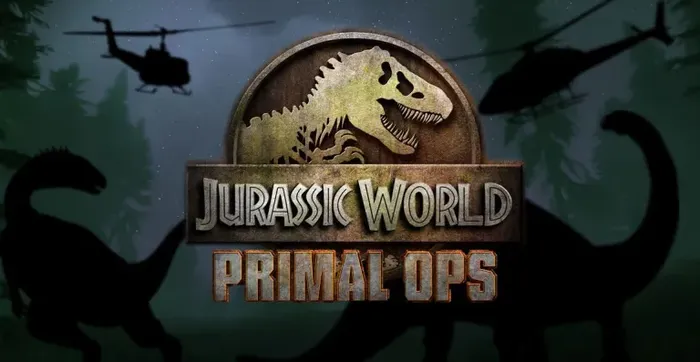
Part One: Tonic Pivot (The Music of Jurassic World Primal Ops: GDC 2023)
Part Two: Quartal Chords and Chromatics (The Music of Jurassic World Primal Ops: GDC 2023)
Part Three: Whole Tone and Octatonic Scales (The Music of Jurassic World Primal Ops: GDC 2023)
Part Four: Polytonality (The Music of Jurassic World Primal Ops: GDC 2023)
Part Five: Kinetics and the 12 Tone Approach (The Music of Jurassic World Primal Ops: GDC 2023)
.webp?width=700&auto=webp&quality=80&disable=upscale) In the previous articles, we’ve taken a look at Tonic Pivots, Quartal Harmonies, Chromaticism, Exotic Scales, Polytonality, Kinetic Fragmentation, and the 12 Tone Approach. That’s an awesome amount of chaos! Which means it’s now time to ask ourselves – have we reached the point at which excitement turns into exhaustion? For Primal Ops, I knew that the musical score couldn’t stay chaotic indefinitely, or it would just get to be too much. Our senses get numbed to sensation if we’re exposed to intense stimuli for too long. There has to be contrast. Periodically, we just need a break.
In the previous articles, we’ve taken a look at Tonic Pivots, Quartal Harmonies, Chromaticism, Exotic Scales, Polytonality, Kinetic Fragmentation, and the 12 Tone Approach. That’s an awesome amount of chaos! Which means it’s now time to ask ourselves – have we reached the point at which excitement turns into exhaustion? For Primal Ops, I knew that the musical score couldn’t stay chaotic indefinitely, or it would just get to be too much. Our senses get numbed to sensation if we’re exposed to intense stimuli for too long. There has to be contrast. Periodically, we just need a break.
I used this melody to insert some familiar, conventional techniques into the score for Jurassic World Primal Ops – and while the melody tends to appear briefly, I used it a lot.
Variations of it are included in nearly every combat track in the game, regardless of its key, mode or style.
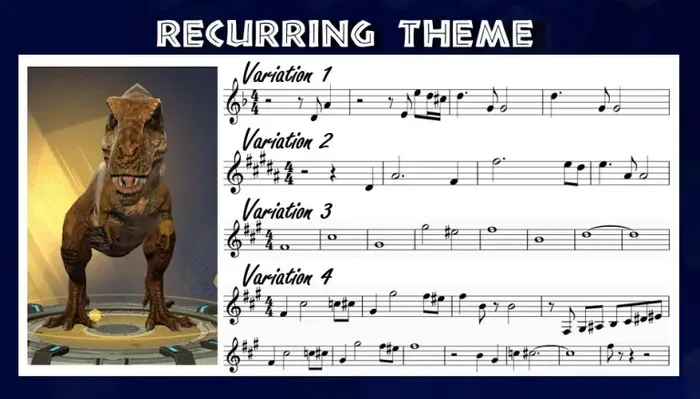
This meant that somewhere during the high-energy mayhem of combat, a familiar melody would suddenly appear on top, injecting some musical clarity into the mix before veering off into chaos once again. So let’s check that out. This variation is from a combat track that adds some chromaticism into the treatment of the theme:
Now let’s listen to a version of the same theme in which the underlying structure moves through a complex chord progression. While these chords support the tumultuous nature of the combat music, the recurring theme provides momentary relief from the chaos:
Finally, let’s check out the most overtly traditional example – the reward stinger. This music is triggered whenever the player successfully completes a mission:
If ever there was a musically soothing, classically-conventional pat-on-the-back, it’s that reward stinger. It’s the best example of a conventionally thematic structure, and the polar opposite of the harmonically-ambiguous if not fully atonal music that comprises much of the score for Jurassic World Primal Ops. And much like a reward, these traditional thematic moments provide a great sense of balance to what would otherwise be a thoroughly chaotic musical score.
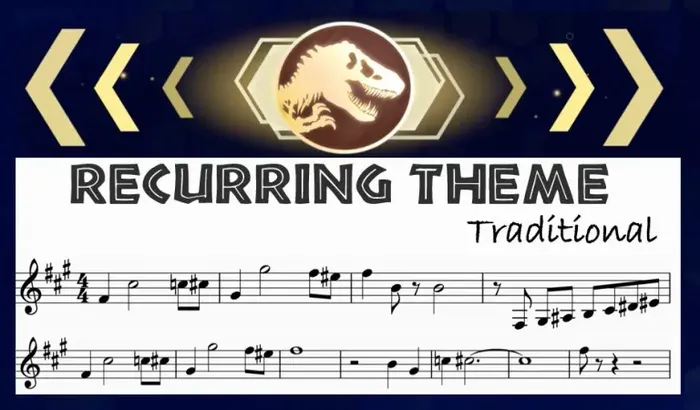
Jurassic World Primal Ops needed action music that could maintain a high level of anxiety over an extended period of time. Over the course of this series of articles, we’ve discussed why creating musical instability in our compositions can help keep players on edge. We’ve talked about why composition experts use determinate cadences to fulfill our expectations, and how we can hijack those expectations with tonic pivots that move our music in unpredictable directions. We’ve looked at traditional chord structures, and how quartal harmonies can make our music feel more ambiguous and suspenseful. We’ve discussed how chromatics obscure our key signature, and why exotic scales like the whole tone and octatonic are so useful in creating uncertainty about the tonal center of our compositions. We’ve learned about the weird atonality of the 12-tone inspired approach, and we’ve taken a dive into polytonality to see why this harmonic device creates such disturbing effects. We’ve explored the importance of kinetic energy in our music, and how meter changes and chaotic ornamentation can make our music more exciting. Finally, we considered the importance of contrast, and why traditional tonality can be important – even in a chaotic musical score.
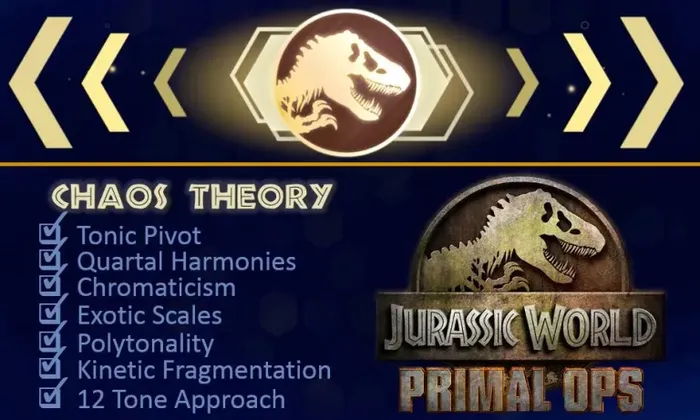
When Jeff Goldblum talks about Chaos Theory in the original Jurassic Park, he tells us that it deals with “predictability in complex systems.” By enhancing chaos over predictability, we can introduce exciting complexity into our game music. For me, these techniques were vital in helping players to feel as though they’re having a gripping adventure in the Jurassic World.
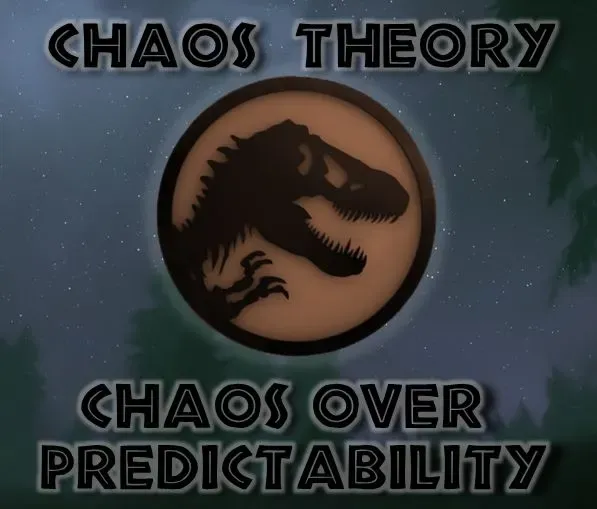
So that concludes this six-article series on the music of Jurassic World Primal Ops. I hope you’ll be inspired to try some of these unconventional techniques from music theory in your own compositions. In the meantime, you can read more about game music composition in my book, A Composer’s Guide to Game Music. Thanks for reading!
.webp?width=700&auto=webp&quality=80&disable=upscale)

Winifred Phillips is a BAFTA-nominated video game composer. The music she composed for one of her most recent video game projects (Horse Club Adventures 2: Secrets of Skeifa Island) won two Global Music Award Gold Medals, two NYX Gold Awards, and is currently nominated for a Society of Composers and Lyricists Award. Music from Secrets of Skeifa Island is included in her latest album release, Ancient Heroes, released by the BMG record label 1 Revolution. Other recent game releases include the hit PlayStation 5 launch title Sackboy: A BigAdventure (soundtrack album now available). Popular music from Phillips’ award-winning Assassin’s Creed Liberation score was featured in the performance repertoire of the Assassin’s Creed Symphony World Tour, which made its Paris debut with an 80-piece orchestra and choir. As an accomplished video game composer, Phillips is best known for composing music for games in many of the most famous and popular franchises in gaming: the list includes Assassin’s Creed, God of War, Total War, The Sims, Sackboy / LittleBigPlanet, Lineage, and Wizardry. Phillips’ has received numerous awards, including an Interactive Achievement Award / D.I.C.E. Award from the Academy of Interactive Arts and Sciences, six Game Audio Network Guild Awards (including Music of the Year), and four Hollywood Music in Media Awards. She is the author of the award-winning bestseller A COMPOSER’S GUIDE TO GAME MUSIC, published by the MIT Press. As one of the foremost authorities on music for interactive entertainment, Winifred Phillips has given lectures at the Library of Congress in Washington DC, the Society of Composers and Lyricists, the Game Developers Conference, the Audio Engineering Society, and many more. Phillips’ enthusiastic fans showered her with questions during a Reddit Ask-Me-Anything session that went viral, hit the Reddit front page, received 14.9 thousand upvotes, and became one of the most popular gaming AMAs ever hosted on Reddit. An interview with her has been published as a part of the Routledge text, Women’s Music for the Screen: Diverse Narratives in Sound, which collects the viewpoints of the most esteemed female composers in film, television, and games. Follow her on Twitter, Facebook, and Instagram.
Read more about:
Featured BlogsYou May Also Like